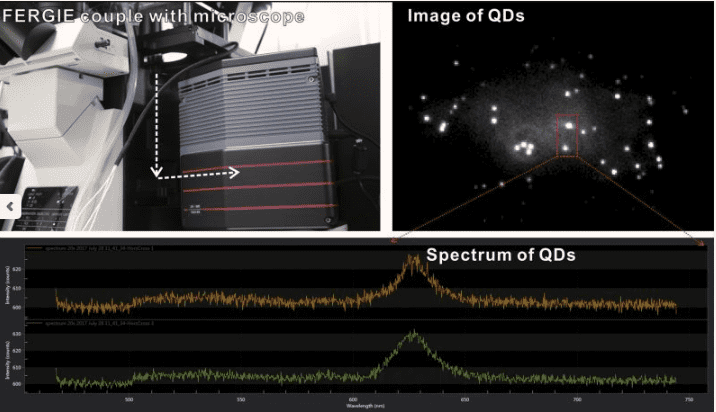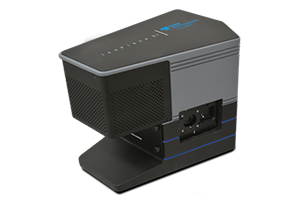Dr. Haiyan Qin
Zhejiang University, China
Background
Dr. Haiyan Qin’s research group at Zhejiang University (Hangzhou, China) focuses on the synthetic chemistry, ligand chemistry, spectroscopy, and devices of colloidal nanocrystals, including semiconductor nanocrystals (quantum dots, or QDs). The group strives to select the most promising material systems as models for fundamental studies in order to promote the development of basic science for novel and high-performance materials that will be useful to humankind.
Quantum dots have already been used as luminescence nanomaterials in a number of applications. However, a lack of understanding of their spectral properties and synthetic control has so far limited their utility in real-world applications.

Figure 1: Imaging and spectral measurements of fluorescent quantum dots using a FERGIE system coupled to an inverted microscope
Challenge
Spectroscopy studies of the Qin group have two main objectives. The first is to assist synthetic chemistry development, especially synthetic control of the excited properties of colloidal nanocrystals. The second is to discover novel and high-performance optical materials for various applications.
The Qin group uses routine spectroscopic methods such as absorption and steady-state photoluminescence spectroscopies to study the optical properties of nanocrystals. In addition, the group uses two advanced techniques. One is transient-state spectroscopy for studying excited-state dynamics in nanocrystal systems. The other is single-molecule spectroscopy. These techniques are fundamental to characterize nanocrystals, assisting synthetic chemistry development as well as studying the optical properties of the novel materials.
I noticed the true spectrum-resolving power delivered by the aberration-free design. Peaks in a spectrum are symmetric and sharp, permitting the clear distinction of two adjacent signals.
Solution
Dr. Qin’s research group have used the FERGIE system (previous version of the IsoPlane 81) to perform QD-related fluorescence microspectroscopy measurements to aid in characterization. By coupling the FERGIE system to an inverted microscope, the fluorescence from the QDs could be measured.
The aberration-free design of the FERGIE system offered almost 4 times better signal-to-noise ratio in comparison to traditional Czerny-Turner spectrometers when using the same experimental conditions. In addition, the high-resolution performance of the system allowed researchers to easily obtain the best focus of the microscope.

